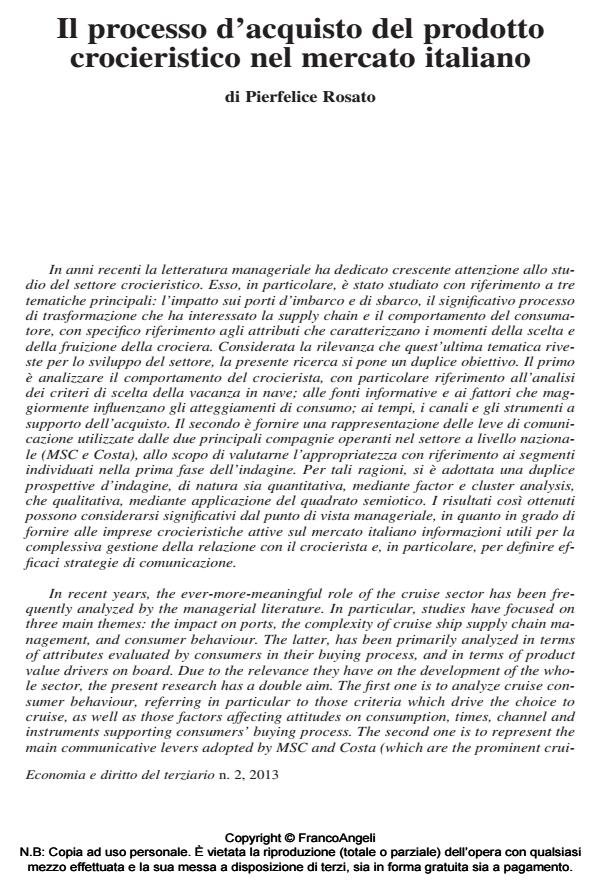Il processo d’acquisto del prodotto crocieristico nel mercato italiano
Journal title ECONOMIA E DIRITTO DEL TERZIARIO
Author/s Pierfelice Rosato
Publishing Year 2014 Issue 2013/2
Language Italian Pages 22 P. 287-308 File size 988 KB
DOI 10.3280/ED2013-002006
DOI is like a bar code for intellectual property: to have more infomation
click here
Below, you can see the article first page
If you want to buy this article in PDF format, you can do it, following the instructions to buy download credits

FrancoAngeli is member of Publishers International Linking Association, Inc (PILA), a not-for-profit association which run the CrossRef service enabling links to and from online scholarly content.
In recent years, the ever-more-meaningful role of the cruise sector has been frequently analyzed by the managerial literature. In particular, studies have focused on three main themes: the impact on ports, the complexity of cruise ship supply chain management, and consumer behaviour. The latter, has been primarily analyzed in terms of attributes evaluated by consumers in their buying process, and in terms of product value drivers on board. Due to the relevance they have on the development of the whole sector, the present research has a double aim. The first one is to analyze cruise consumer behaviour, referring in particular to those criteria which drive the choice to cruise, as well as those factors affecting attitudes on consumption, times, channel and instruments supporting consumers’ buying process. The second one is to represent the main communicative levers adopted by MSC and Costa (which are the prominent crui- se firms operating in Italy), in order to evaluate how much they fit on segments, as identified in the previous step of the analysis. Both a quantitative (through a factor and a cluster analysis) and qualitative (through the semiotic square) perspective has been adopted. Research results may be meaningful in order to support cruise firms in managing their relation with customers and defining more effective communication strategies.
Pierfelice Rosato, Il processo d’acquisto del prodotto crocieristico nel mercato italiano in "ECONOMIA E DIRITTO DEL TERZIARIO " 2/2013, pp 287-308, DOI: 10.3280/ED2013-002006